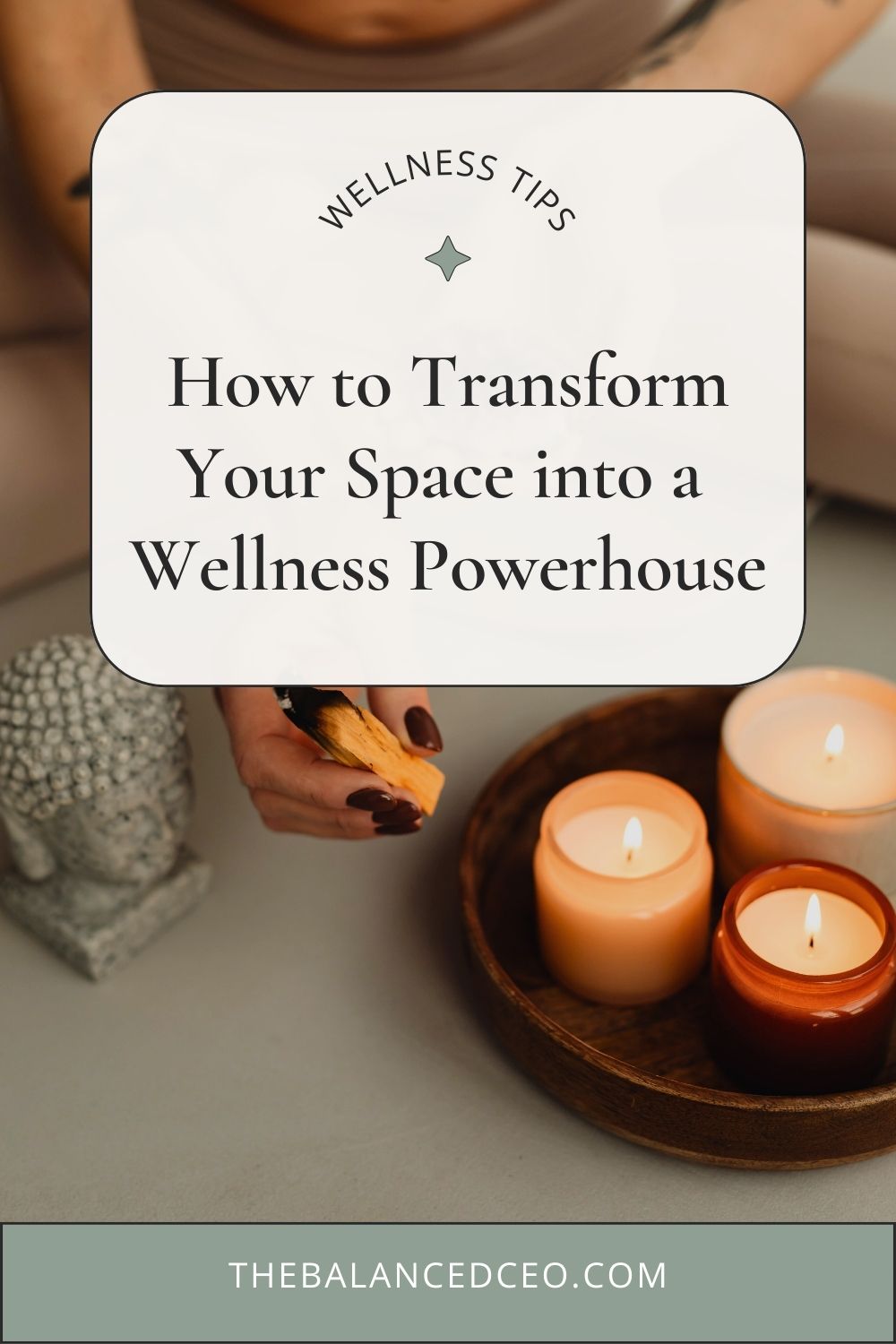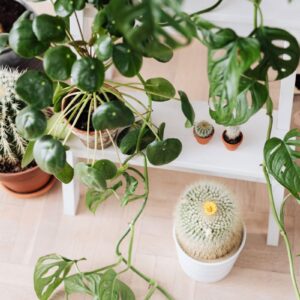This post may contain affiliate links, which means I’ll receive a commission if you purchase through my links, at no extra cost to you. Please read full disclosure for more information.

In today’s fast-paced world, our homes have become more than just places to eat and sleep. They’ve evolved into sanctuaries where we seek refuge, rejuvenation, and well-being. But how can we transform our living spaces into true wellness powerhouses?
This guide will explore practical and innovative ways to create an environment that nurtures physical, mental, and emotional health. From incorporating nature-inspired elements to maximizing natural light and utilizing multifunctional furniture, we’ll explore strategies to help you design a space that promotes wellness in every corner.
Smart Furniture Choices for Wellness and Flexibility
Selecting the right furniture can significantly impact your space’s functionality and wellness. Here are some smart choices to consider:
- Multifunctional Furniture: Opt for pieces that serve multiple purposes, such as versatile sofa beds or ottomans with storage. These save space and reduce clutter, creating a more organized and stress-free environment.
- Ergonomic Seating: Invest in chairs and sofas that properly support your back and neck, especially if you spend long hours working from home.
- Standing Desks: Alternate between sitting and standing throughout the day to reduce the negative impacts of prolonged sitting.
- Adjustable Lighting: Choose lamps with adjustable brightness and color temperature to create the right ambiance for different activities and times of day.
By incorporating these furniture choices, you create a flexible space that adapts to your changing needs while supporting your physical health.
Maximizing Natural Light and Air Quality
Natural light and clean air are essential components of a healthy living environment. Here’s how you can optimize both in your space:
- Energy Efficiency: Consider saving energy costs by switching to more energy-efficient sources, such as solar power panels. Solar panels will reduce your carbon footprint and allow you to power your home with clean, renewable energy.
- Light Management: Use sheer curtains or adjustable blinds to control natural light throughout the day. This allows you to maximize daylight while preventing glare.
- Mirrors and Reflective Surfaces: Strategically place mirrors to bounce light around the room, making the space brighter and more open.
- Air Purification: Invest in a high-quality air purifier to remove pollutants and allergens from your indoor air.
- Natural Ventilation: Open windows when the weather permits to allow fresh air circulation. Consider installing window screens to keep insects out while letting the breeze in.
Focusing on these aspects creates a bright, airy space that promotes better sleep, improved mood, and increased productivity.
| Getting the right light helps! Different wavelengths of light affect the body differently, as light provides benefits such as Vitamin D, regulation of sleep cycles, stress management, and even boost energy. |
Bringing Nature Indoors
Biophilic design incorporates natural elements into our living spaces and has been shown to reduce stress, improve cognitive function, and enhance overall well-being. Here are some ways to infuse your home with nature:
- Indoor Plants: Introduce a variety of plants to purify the air and add a touch of greenery. For busy individuals, consider low-maintenance options like snake plants, pothos, or succulents.
- Natural Materials: Incorporate wood, stone, and other natural materials in your furniture and decor choices. A wooden coffee table or stone-textured wallpaper can make a significant impact.
- Nature-inspired Textures and Patterns: To bring the outdoors in, choose fabrics and wallpapers with leaf patterns, floral designs, or organic shapes.
- Water Features: The soothing sound of flowing water can create a calming atmosphere. Consider a small indoor fountain or a tabletop water feature.
By integrating these elements, you create a connection with nature that can boost your mood and overall sense of well-being.
| Biophilic design integrates nature into the built environment: Connecting nature and structures through biophilic design has benefits such as improving emotional attachments, positive interactions, and interconnectedness. |
Creating Zones for Relaxation and Productivity
To truly transform your space into a wellness powerhouse, it’s crucial to designate specific areas for different activities. This zoning approach helps create mental boundaries and supports a healthy work-life balance. Here’s how to implement this strategy:
- Meditation Corner: Set aside a quiet nook with comfortable cushions or a yoga mat for meditation and mindfulness practices.
- Home Office: If possible, create a dedicated workspace separate from your relaxation areas. This will help you maintain focus during work hours and allow you to “leave” work at the end of the day.
- Exercise Area: Designate a space for physical activity, even if it’s just enough room for a yoga mat or basic exercise equipment.
- Sleep Sanctuary: Make your bedroom a technology-free zone focused on rest. Use calming colors and invest in a high-quality mattress and bedding.
By creating these distinct zones, you provide spaces supporting various aspects of your wellness journey, from physical fitness to mental clarity and restful sleep.
| Apply basic design principles: Aside from creating space for zones, you can add more appeal to your home by following basic interior design principles. These include enhancing zones with a balance of furniture (symmetrical or otherwise), breathing life to colors with contrast, emphasizing elements with proportions, emphasizing centerpieces, and even following a consistent theme. |
Build Your Wellness Sanctuary One Step at a Time
Transforming your space into a wellness powerhouse is about creating an environment that supports your physical, mental, and emotional health.
By incorporating elements of nature, maximizing natural light and air quality, choosing smart furniture, and creating dedicated zones for different activities, you can design a home that truly nurtures your well-being.
Remember, small changes can make a big difference, so start with one area at a time and gradually work towards creating your ideal wellness sanctuary.
Your future self will thank you for investing in a space that promotes a healthier, more balanced lifestyle.





Leave a Reply